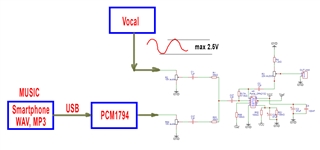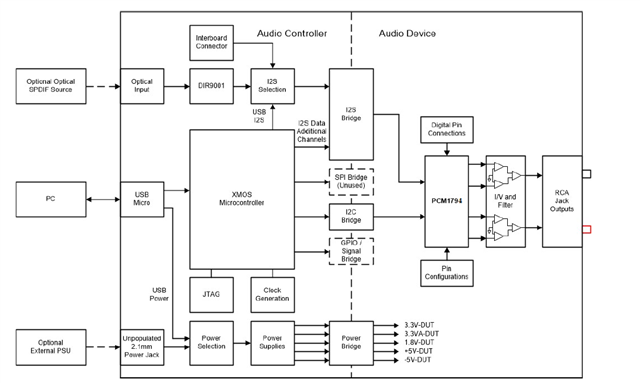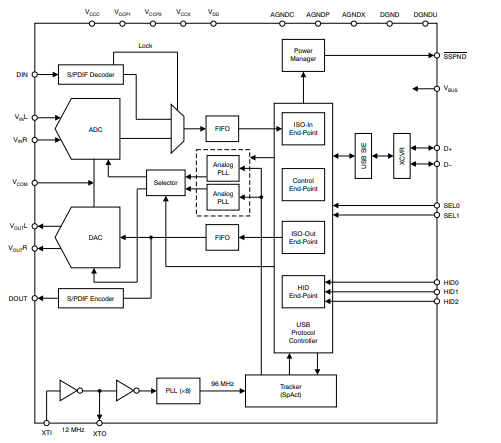Other Parts Discussed in Thread: , PCM2903C
Hello!
I need the most simple scheme for very high-quality conversion of sound files from a smartphone via USB-C. On the Internet, I found that very often they use the PCM1794 chip for this. Perhaps it is outdated and now you need to use a different chip?
The output signal will be sent to the mixer where it will be mixed with other audio signal. Then the signal to the low frequency amplifier. No other inputs than USB-C. No other adjustments. Simply very high quality music reproduction for live performances of vocalists.






